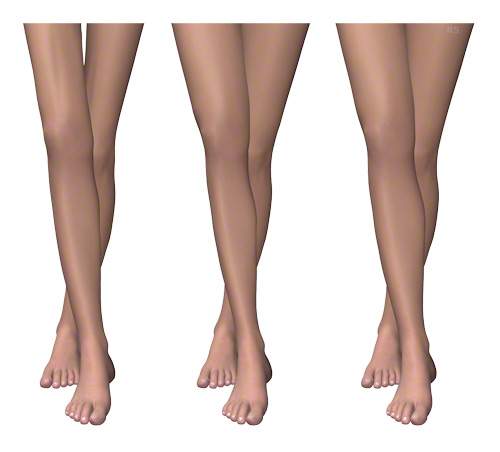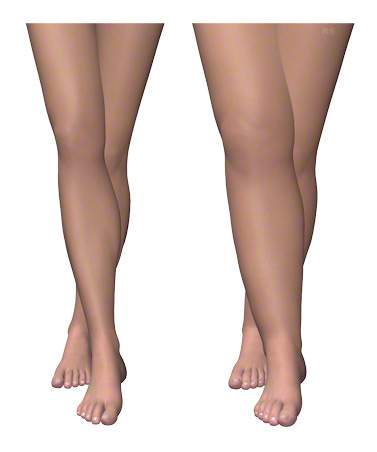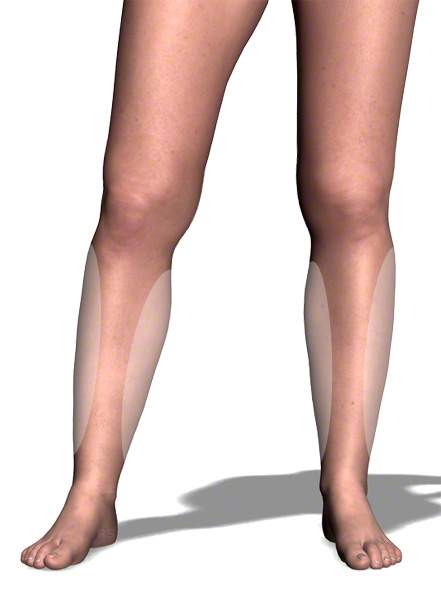In this article you will find information about surgical and non-surgical calf correction (calf enlargement or reduction, calf surgery) at the Yuveo Clinic in Düsseldorf.
Among other things, we will answer your questions about the different types of calf surgery and the reasons why you should have your calves treated at the Yuveo Clinic.
Calves that are perceived to be too big sometimes have too much fat or too much muscle, while calves that are too small are sometimes inherited and can be enlarged by calf implants.
Dr. Schumann and Dr. Schumann-Averkiou
Content
Yuveo Klinik
Characteristics of calf surgery
Fat or muscle – which needs to be treated? That is the decisive question in calf correction.
Calf correction
Types of calf surgery
The following calf surgery options are available.
Consider using these options if the changes in exercise are not effective, and/or a change in diet does not reduce the size of fatty calves, and/or the psychological strain due to the condition is significant:
- Liposuction: If there are fatty deposits in the lower leg area then liposuction can be used to correct both the calves and the ankles.
- Calf Reduction for Calf Muscles: the most effective method is to remove a calf muscle (the gastrocnemius muscle). A slightly less effective method is the partial removal of the muscle. An additional option is to undergo a neurectomy of the muscle. These invasive calf correction methods, including Botox treatment for calf reduction, have no long term impact on the function of the calf, as, despite it’s volume, the muscle in question is an accessory muscle only, whose tasks can be assumed by other muscles.
- Calf Augmentation: Operational calf augmentation is possible with calf implants, Hyaluronic acid (lasts approx. 1.5 years), or a transplant of your own body fat.


FAQ: Calf surgery
Are the calves muscular or fatty?
Before considering an operational calf correction, you should ascertain whether the change in calf size occurred because of an increase in muscle mass or due to localized fat deposits.
This is easy to determine: simply pinch together your skin and subcutaneous fatty tissue. Everything which you can hold between your fingers is fatty tissue.
If you are only able to pinch 0.5-1cm of fatty tissue, then calf surgery for larger calves using Liposuction is pointless, as muscle hypertrophy is the cause of the calf enlargement.
What are the indications for calf surgery?
Patients may want calf surgery for calves which are genetically too small or too large. They may also be experiencing changes in the muscles or build up of fat. Calf deformity can also be caused by various diseases. Calf deformity can take on extreme forms, particularly in the case of disease, and may also be connected with obvious asymmetry.
The following diseases are among those that can cause muscular changes in the calves:
- Clubfoot
- Spastic Paralysis
- Polio (Poliomyelitis)
- Osteomyelitis
- Injuries such as burns, extensive contusions, broken bones, and nerve injuries connected with muscle wasting (muscular atrophy).
Localized fat deposits can often cause the calf/lower leg area to be perceived by the patient as being too bulky:
- Localized Obesity
- General Obesity
- Lipedema (Type of Lipomatosis)
In many cases patients undergo calf surgery for purely aesthetic reasons. They perceive the calf as being much too small or too large. If the finding is indeed plausible (the calf could be perceived as too large or too small) and the condition is combined with psychological strain and, depending on the case, limits social activities, then calf surgery can result in significant improvements to the patients quality of life.
There are currently various procedures which produce good or very good results with little risk of complications, provided they are carried out by a practiced hand.
Is a calf revision through physical training possible?
Calf correction can be achieved naturally through sport/abstention from sport.
Standing on your toes with and without weights, climbing stairs, hiking, sprinting, etc. are typical training exercises with which you can build up your calf muscles.
If your calf muscles are too small, you should increase and intensify calf training exercises.
If your calf muscles are too large, then you should avoid doing these exercises.
What does postoperative care for calf surgery involve?
The type of after care you will require cannot be simplified here, as it depends on which calf surgery method you decide to use.
The need to abstain from sport and wear compression bandages will differ from patient to patient even after liposuction, depending on the extent of the operation.
You can find additional information on after care in the relevant articles.
Checking the facts
As calf correction is performed by very different methods, no individual fact check is possible here.
You will find the details in the special treatments for calf correction.
Further information
Related topics:

